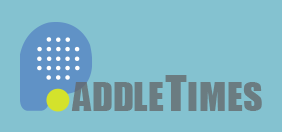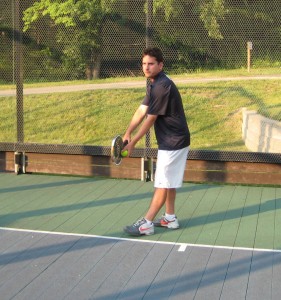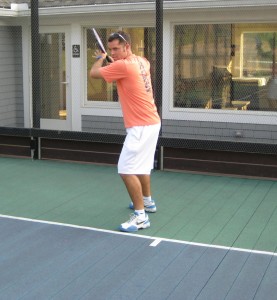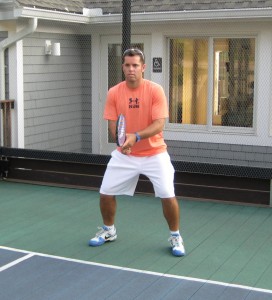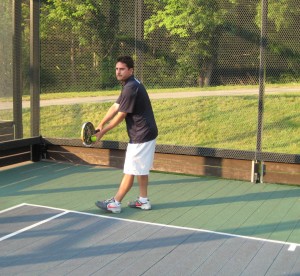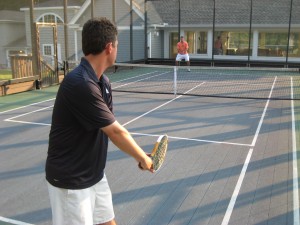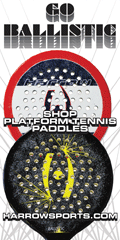There is only one sure thing in paddle: Your opponent will serve and the ball will land in the service box (that is, of course, if they don’t fault). With that said, you know that this may be the only time where the ball will bounce short in the entire point and your only opportunity to drive.
There are different areas a player can position himself when returning serves. A lot has to do with their strategy and the position of the server. Let’s see what happens with right handed players on the deuce side: If your opponent is serving near the center mark (Photo 1), then you would probably expect the ball to bounce on the left side of the serving box. If you are planning to drive the return (what you should), then position yourself with the paddle back and shoulders and hips sideways ready to lean forward and drive the ball with your forehand (Photo 2).
Photo 1
Photo 2
Other players don’t have a preference between driving their return with their forehand or backhand. If that is your case, then position yourself in the middle of your service box with your paddle in ready position (Photo 3).
Photo 3
If your opponent positions himself near the doubles alley (Photo 4) and likes to aim to the nick (the corner where the side wire meets the back wire), you should then move towards the middle of the service box (Photo 5). You can either try to drive your forehand or just simply block the ball and lob it back.
Photo 4
Photo 5
Although driving the return is a great option, sometimes due to the pace and spin of the serve, the returner may have a tough time making an effective drive on their return of serve. Just let the ball go into the wire and lob it back. Getting the ball in play and avoiding giving away free points is always a good plan.
As we noted earlier, the return of serve may be your only chance to drive during the point. Unless your opponent faults, you know that the ball will land short. Learn to position yourself to drive the ball and you will be on your way to move to the next level.
